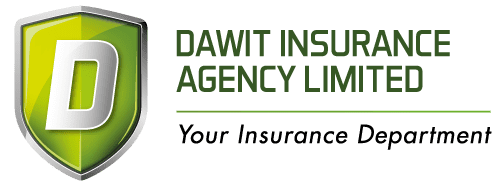Do You Find Insurance Documents Too Long To Read?
Most people understand that insurance documents are essential. But, at the same time, very few people want to spend time reading through all of the fine print. They say, “They’re TLDR (Too Long, Didn’t Read).”
As a result, many people simply gloss over their insurance documents or don’t even bother reading them. This is a huge mistake.
While it’s true that insurance documents can be lengthy and confusing, it’s important to take the time to understand what you’re signing up for. After all, these documents contain critical information about your coverage, including what is and isn’t covered.
To help make things easier, we’ve put together a quick guide on how to read insurance documents. By following these tips, you can be sure that you fully understand your coverage and are getting the most out of your policy.
But first, let us understand what an insurance document is all about.
Summary
- Clarifying and Verifying the Contents of an Insurance Document
- Why it’s important to read your insurance documents
- Why are they so long and boring to read?
- How to Read Your Insurance Documents: Credible Agents’ Advice
- Break it down into manageable chunks; start with the basics.
- Highlight essential points; know what to check.
- Examples of what to look out for in your policy wording
- Make notes as you go along, and take your time.
- Ask for help if needed.
- Recap: the key points to remember about reading and understanding your insurance documents
Clarifying and Verifying the Contents of an Insurance Document
As an individual or business, you need health, life, car, home, or business insurance. To process your insurance policy, you are provided with insurance documents. But what exactly is an insurance document? And what is it for?
An insurance document is a contract between an insurer and a policyholder. The insurer agrees to provide coverage for certain risks in exchange for a premium from the policyholder in the contract. The contract may also include exclusions and risks not covered by the policy.
It is a document that aims to protect the policyholder from financial losses that could arise from certain risks.
For example, if you, the “policyholder,” have health insurance, the insurer will pay for some or all of the costs associated with your medical care. Also, if you, “the policyholder,” have homeowners’ insurance, the insurer will compensate you for damage caused by fire, theft, or other covered events.
Insurance documents can be complex, but they serve an essential purpose: to help protect people from financial ruin in an unexpected loss.
Why it’s important to read your insurance documents
Most people don’t read their insurance documents. They figure that as long as they have insurance, they’re covered.
Your insurance documents contain critical information about your policy and what isn’t covered. If you don’t read them, you could find yourself in a situation where you thought you were covered but weren’t.
For example, let’s say you have health insurance. You go to the doctor for a routine check-up and are diagnosed with a disease. You begin treatment, only to find out later that your health insurance doesn’t cover that particular condition. If you had read your documents, you would have known that and could have made other arrangements.
Of course, reading your insurance documents can be tedious. They’re often long and full of technical jargon. But it’s important to skim them at least to know your cover. That way, if something does happen, you’ll be prepared.
Why are they so long and boring to read?
You might not be able to tell from looking at your insurance policy, but those long and tedious documents are required by law. Every insurance company must provide potential customers with a policy schedule, a standard document that outlines the plan’s key features.
The policy schedule includes relevant information concerning the plan. Some of the essential items included are exclusions, conditions, warranties, deductibles/policy excesses, and co-pays.
While these documents may not be the most exciting reading material, they are an essential part of the insurance buying process.
Having understood what an insurance document is, join me as we demystify reading them.
How to Read Your Insurance Documents: Credible Agents’ Advice
Most people dread reading insurance documents because they are long and tedious. However, understanding your insurance policy is very important if you need to file a claim.
Here are a few tips on how to make reading your insurance policy less daunting:
- Break it down into manageable chunks.
- Highlight essential points.
- Make notes as you go along.
If you still find yourself struggling, don’t be afraid to ask for help from an expert. It’s better to be safe than sorry and know what your policy covers!
Break it down into manageable chunks; start with the basics.
Before diving into the details, take a few minutes to familiarize yourself with the basics of your insurance policy. This includes understanding the type of policy and the coverage limits, and the deductible and policy excess.
Doing so will give you an excellent foundation to work from as you read through the rest of the document. At Dawit Insurance Agency, we assist our clients by first providing a policy summary.
Highlight essential points; know what to check.
When reading through an insurance contract, there are specific key terms and phrases that you should be on the lookout for in the policy document.
Examples of what to look out for in your policy wording
These include “exclusions,” “limitations,” and “conditions.” By understanding what these terms mean, you can better understand your coverage and what is included in your policy.
Make notes as you go along, and take your time.
Reading through an insurance contract can be a lot of work. But, it’s essential to take your time and read through the document carefully. This way, you can be sure that you fully understand the terms of your policy and are getting the coverage you need.
Ask for help if needed.
If you’re having trouble understanding your insurance contract, don’t hesitate to ask for help from your agent or broker. They can explain your policy details and help answer any questions you may have.
Following these tips, you can be sure that you fully understand your coverage and are getting the most out of your policy.
Recap: the key points to remember about reading and understanding your insurance documents
When it comes to insurance, there are a lot of essential details to keep track of, but the summary is:
- Insurance documents can be long and tedious, but it’s vital to skim them at least once to know how you’re covered. Do not say they are TLDR (too long, didn’t read).
- You can break down the document into manageable chunks, highlight the most critical points, and make notes as you go along.
- If you’re still having trouble understanding your policy, don’t hesitate to ask for help from your agent or broker.
By following these tips, you can be sure that you get the coverage you need and fully understand your policy.
********************
This article is written and published by Dawit Insurance Agency Limited.

